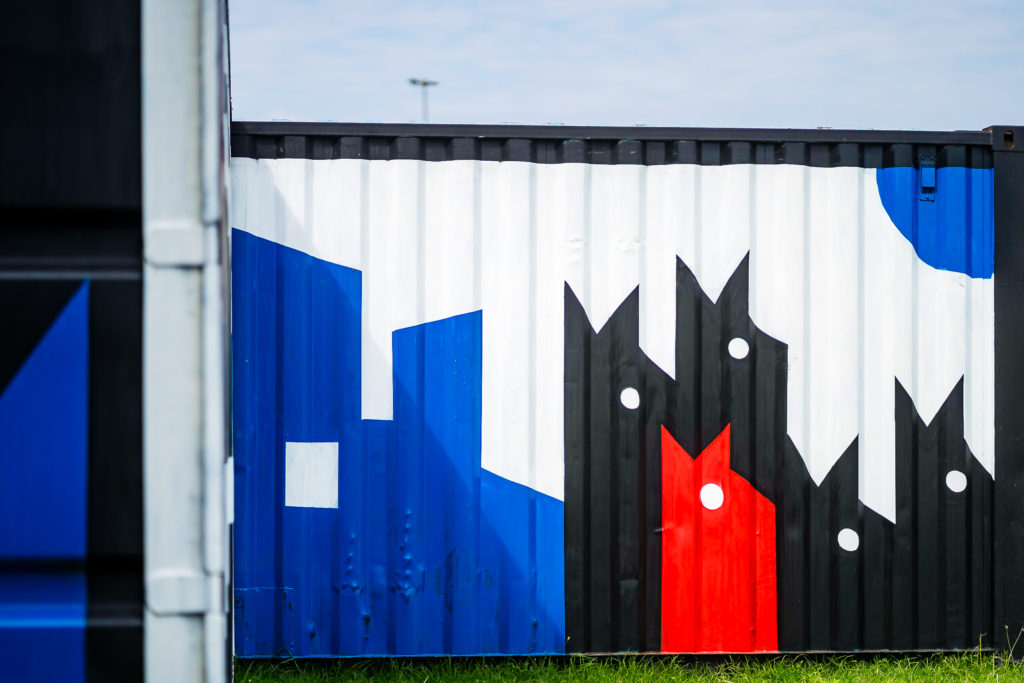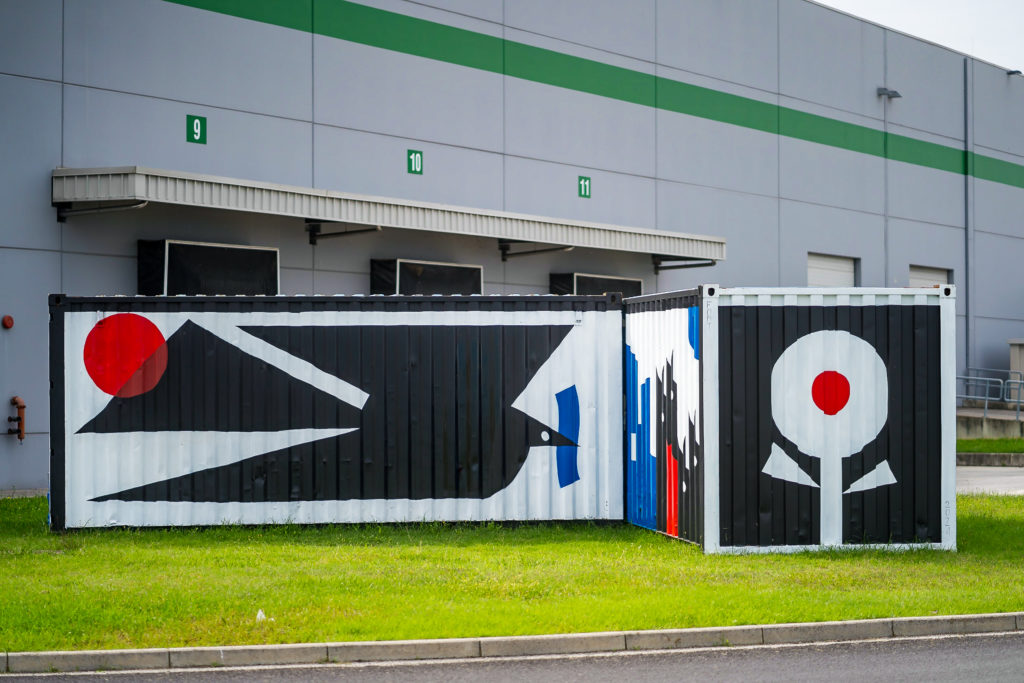




We are standing before “Working Class,” a powerful piece by Luca Font, an artist who has made an indelible mark on the international art scene.
Luca Font’s career began in 1994 when he took his first steps as a graffiti writer. Since then, he has never stopped exploring new creative paths, becoming a key figure in the global urban art movement. Font was one of the first to break away from traditional graffiti styles, adopting an approach that blends graphic design, typography, and illustration. His collaborations span from album covers for bands like Ovo and Chambers to posters for events such as the Miami Festival, and even streetwear collections for brands like Carhartt. One of his murals is hosted at Prologis Park Lodi.
Over the years, Luca Font has developed a unique artistic language, where every detail reflects a careful and conscious exploration. His work is characterized by a hybridization of graphic art and sculpture: flat surfaces layered to create a stunning three-dimensional effect that challenges our perception.
In “Working Class,” Luca Font tells a story that is often overlooked—the story of the people working behind the scenes in the logistics industry. Rather than focusing on abstract concepts, Font places the workers of the Interporto at the heart of his narrative. Through a metaphorical portrait, the artist invites us to reflect on the importance of these distribution centers, which often remain invisible but are essential to our daily lives, ensuring that everything we need reaches our homes and cities, whether large or small.
The key themes that inspired this work—teamwork, nature, and innovation—are clearly visible in the way Font has conceived the piece. There’s a sense of evolution and continuous movement, reflecting the energy and dynamism of the logistics world, a world we rarely see but that works tirelessly to keep modern society functioning smoothly.
With “Working Class,” Luca Font pays homage to the everyday laborers, highlighting the value of manual work and the crucial role that logistics centers play in our daily lives. This artwork, with its beauty and immediacy, invites us to look beyond the surface and recognize the fundamental contribution of those who make our way of life possible, day in and day out.